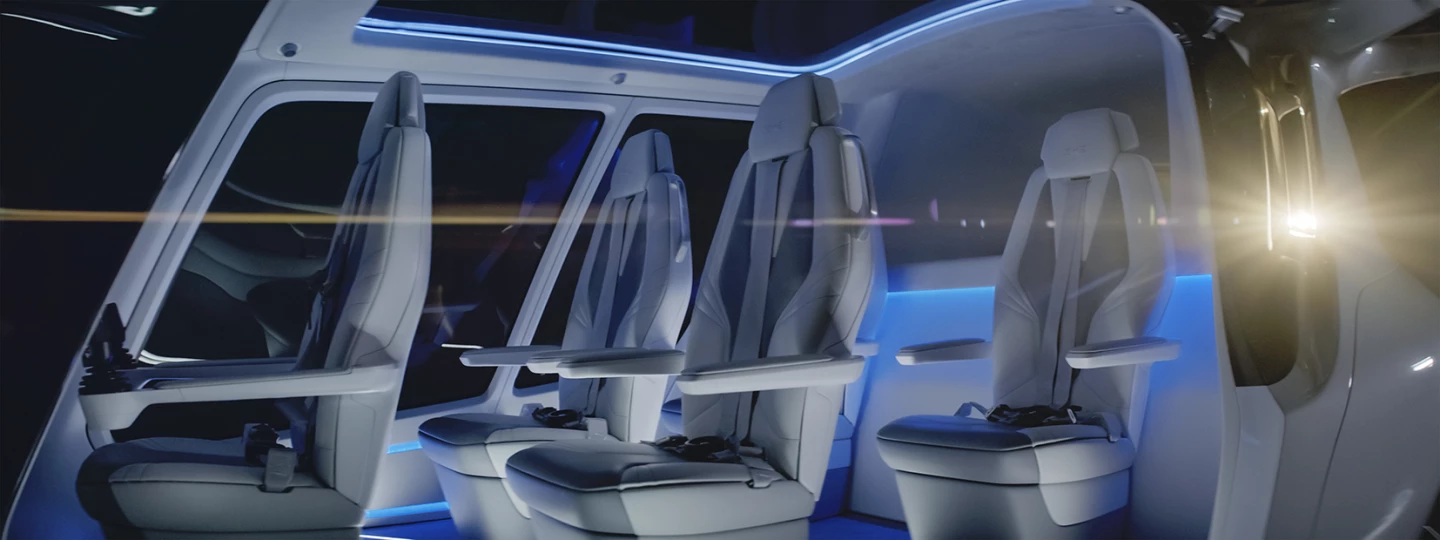A new electric vertical take-off and landing (VTOL) air taxi company came out of stealth mode today, using a hydrogen fuel cell powertrain that neatly sidesteps the energy density issue that's holding back battery-powered aircraft. Alaka'i Technologies' Skai machine has a range of up to four hours/400 mi (640 km) and a five-passenger capacity.
Hydrogen is a difficult fuel to deal with in an automotive context, but it might just be the shot in the arm that the electric aviation industry needs to get VTOL multicopter air taxis up and running. Current lithium battery technology offers poor energy density, which severely limits the range figures of current e-VTOL projects. But hydrogen offers up to 10 times the energy density, as well as gasoline-quick refueling, if you can deal with the inefficiencies of producing, transporting and storing it. And those difficulties can be better managed in a centralized aviation model that doesn't need to roll out across the entire road network.
Thus, Massachusetts-based Alaka'i Technologies has spent the last four years beavering away at building a hydrogen-powered air taxi, which it launched today in California. According to an interview with SoCalTech, the company is operating under the funding of a sole investor, who has carried it through design, development, prototyping and is now footing the bill for FAA certification, which Alaka'i CEO Steve Hanvey says he believes should be possible before the end of 2020 due to the simplicity of the airframe.

The aircraft itself does look simple; it's a six-rotor multicopter with largish carbon props, co-designed by Designworks (the design innovation studio for BMW). There's no coaxial props, ducted fans, tilting elements, wings or pusher props – the Skai will operate much like a drone, requiring thrust at all times to stay in the air, suggesting that future models that do have some wing lift capability in forward flight will have even more impressive range figures.
It seats five, including a pilot – and indeed will be piloted rather than autonomous upon launch, but Alaka'i says it's certainly looking to make these things pilotless in the future.

In terms of safety, the Skai has some redundancy built in with its six props and can probably fly if a couple of those go down. In the case of total failure, it carries an "Airframe Parachute" (capitalization theirs) to bring it down softly. Of course, even the fastest ballistic parachutes take some time to open out and slow down a fall, meaning that they're basically useless below a certain altitude – and we'll be interested to discover how Alaka'i is dealing with the "death zone" below that.
The company says it's planning and designing "all touchpoints, digital, physical and service" for the air taxi concept, so it seems it's keen on owning the whole operation as opposed to plugging in to a (purely theoretical) service like Uber Elevate.

The prototype looks impressive, the powertrain seems to have a genuine opportunity to beat the battery guys into the air, and a 4-hr/400-mile range will make this thing immediately useful, and potentially profitable, as soon as it's certified and ready to go. We'll be keeping our eyes on the Skai.
See a video below for a closer look at Alaka'i Technologies' eVTOL vehicle.
Source: Alaka'i Skai












